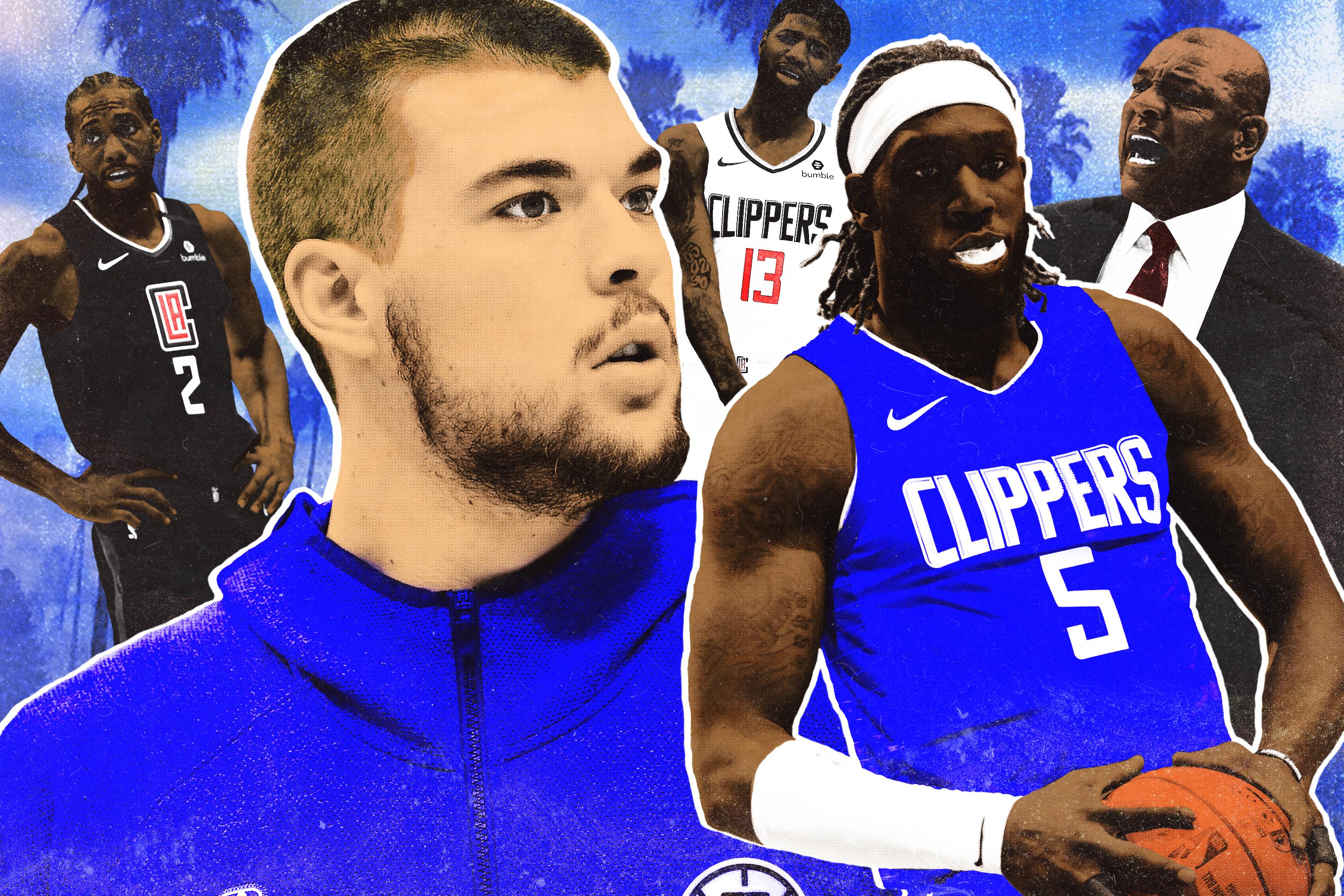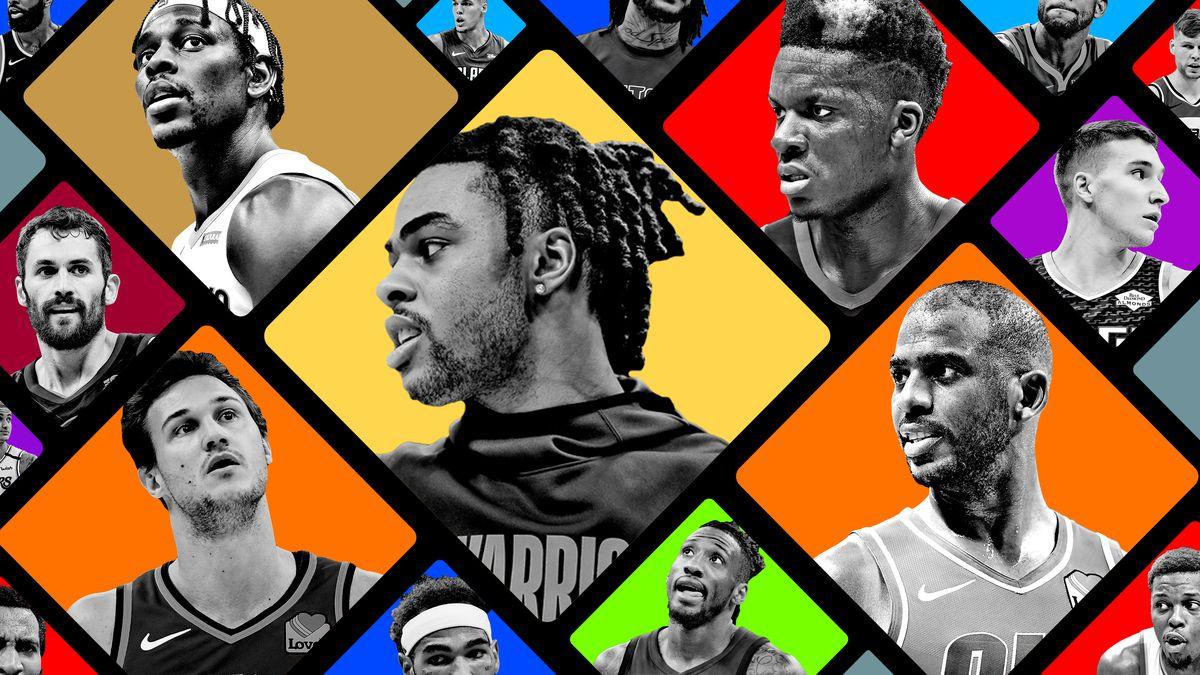
The Clippers are taking small ball in a new direction. The Warriors were the first modern team to win an NBA title with a player as small as Draymond Green (6-foot-6 and 230 pounds) at center. The million-dollar question is whether he was an anomaly or the start of something new. During Golden State’s historic run, Draymond was a generational defensive talent surrounded by perimeter superstars. The current Clippers have the second part of that equation in Kawhi Leonard and Paul George. How far can they go with a different kind of small-ball 5 in Montrezl Harrell?
Both Harrell and Green slipped into the second round of the draft because of concerns about their position and size at the NBA level. Neither had the perimeter game of a power forward or the height of a traditional center. They have similar physical dimensions. Harrell is slightly taller (6-foot-7), a little heavier (240 pounds), and has an even freakier wingspan (7-foot-4) that allows him to play like a much bigger player. The two came into the league at the perfect time, as teams were downsizing and looking to spread the floor with 3-point shooters, making their ability to move their feet and play in space on both ends of the floor more important.
But while Harrell and Green play the same position, they do it in opposite ways. Harrell is the inverse of Green. He’s a great offensive player who gets by on defense as opposed to a great defensive player who gets by on offense.
It’s amazing how far the 25-year-old has come since being a throw-in to the trade that sent Chris Paul to the Rockets three seasons ago. The Clippers weren’t even sure they would keep him. But Harrell earned a spot on their roster and became a cult favorite among League Pass watchers by throwing his body around the floor and dunking on anyone who got in his way. Harrell came off the bench with Lou Williams to form one of the most dynamic pick-and-roll combinations in the league. They instantly had more chemistry on the play than some duos who spent their whole careers together. It was like watching a great quarterback and receiver playing pitch and catch. Each knew where the other would be before the defense could even respond.
The difference for Harrell this season is that he doesn’t need his guards to set him up anymore. He’s now an elite scorer who can be the focal point of the offense. Harrell is one of seven centers this season averaging more than 18 points per game, and the only one who doesn’t start. The other six are a who’s who at the position: Anthony Davis, Joel Embiid, Nikola Jokic, Karl-Anthony Towns, LaMarcus Aldridge, and Nikola Vucevic. And Harrell has a higher field goal percentage (57.8) than all of them.
Harrell is more than just a great athlete. His skill and feel for the game separate him from other big men. Harrell doesn’t shoot 3s, but he can handle the ball and unleash a floater that is almost automatic. He also has an intuitive sense of how to find cracks in the defense and finish in crowds. Harrell rarely forces the action. He either creates a high-percentage look for himself or moves the ball to one of his guards and waits for his next chance to strike. There are times when he even looks like Draymond on offense, making plays in four-on-three situations and finding open shooters while rolling to the rim after setting screens.
Harrell comes off the bench behind Ivica Zubac, a more traditional center, but he’s a starter in all but name. He closes games and gets the bulk of the playing time (28.7 minutes per game) at the position. The Clippers depend on his scoring. They don’t have many perimeter players who can create their own offense, especially with Kawhi doing his customary load management and George in and out of the lineup while recovering from two offseason shoulder surgeries. The result is an unusual point distribution, with four players—Kawhi, George, Harrell, and Williams—averaging more than 19 points per game and no one else in double digits.
The concern with Harrell is his defense. It’s not that he’s a bad defender. He can switch screens and stay in front of smaller players, and he has improved as a help-side and post defender over the course of his career. He knows how to play a role within the Clippers’ scheme.
Their defense doesn’t slip when he’s on the floor, which is impressive considering who he plays with. They have the exact same defensive rating with Harrell (104.8) as they do without him this season, even though he plays fewer minutes with Kawhi and more with Williams, one of the worst defenders in the NBA. His defensive rating goes from 98.6 in 503 minutes with Kawhi to 105.4 in 953 minutes with Williams.
But Harrell does have limitations on that end of the floor that could rear their head in the playoffs. He’s an average defensive rebounder who can’t always bother the shots of bigger players.
That is where he falls short in comparison to Green. Green doesn’t just fit in a scheme. He breaks the scheme to make plays and always finds ways to be a deterrent inside, even when he gives up size. And like all great defenders, he sometimes colors outside the lines to slow down his opponents.
That is the kind of defense the Clippers will need from Harrell to get to where they want to go. They might have to advance through a murderers’ row of new-age big men to win a title—Nikola Jokic in the second round, Anthony Davis in the Western Conference finals, and Giannis Antetokounmpo in the NBA Finals. It’s like a video game where the bosses keep getting harder and harder.
Even a potential first-round series against the Rockets, Mavs, or Thunder would be challenging for Harrell. The first two teams would make him guard pick-and-rolls featuring James Harden and Luka Doncic, respectively, and against the third, he would have to bang against a bruiser in Steven Adams. Harrell could pick up a lot of wear and tear on his body over the course of a two-month playoff run, especially given his all-out style of play. He has played in only 13 playoff games in his NBA career. If things go right for L.A., he might have to play in twice as many this season.
Zubac will help carry the load to some degree. He’s an improving two-way center with the size (7-foot and 240 pounds) to hold his own against guys like Adams and Jokic. But there will be matchups where his lack of speed and inability to defend at the 3-point line become a liability. Zubac couldn’t stay on the floor in their playoff series with the Warriors last season. The matchups will be really tough for him against the Clippers’ two biggest threats: the Lakers and Bucks. The former would likely downsize and move Davis to the 5, forcing Zubac to defend the pick-and-roll between LeBron James and Davis, while the Bucks would force him to either defend Giannis or chase Brook Lopez around the 3-point line.
That’s why it will all come down to Harrell. He doesn’t have to win those series with his defense. But he can’t lose them, either. The Clippers don’t have many options on their roster. Barring a trade, the only other candidate is JaMychal Green.
The Clippers will likely be active at the trade deadline. They can package the expiring contract of Maurice Harkless ($11 million) and their first-round pick in the upcoming draft. There is no tomorrow for the franchise, not after they traded three unprotected first-round picks and two pick swaps to the Thunder for George this offseason in order to lure Kawhi.
But there might not be much help coming at center. The Clippers’ lack of perimeter scoring means they need scoring from their bigs, especially because Williams’s poor defense might force him off the floor against elite offenses. There aren’t many centers available who would be a defensive upgrade over Harrell while still providing the same offensive punch.
Harrell isn’t just playing for his team in the playoffs. He’s in the last season of a contract that pays him only $6 million per year, making him one of the biggest bargains in the league. He will be an unrestricted free agent this summer, and one of the most interesting players in an otherwise weak class. If Harrell shows that he can defend at a high enough level against elite competition in the playoffs, he could more than triple his current salary.
The Clippers almost have to pay him regardless. They will be so far over the salary cap that they will have no way to replace him. That’s the downside of signing Kawhi and George to max contracts: There won’t be many ways to change the roster around them in the years to come. Los Angeles has already gone all in on the new kind of small ball that Harrell represents. The Clippers may have no choice but to double down this summer.


